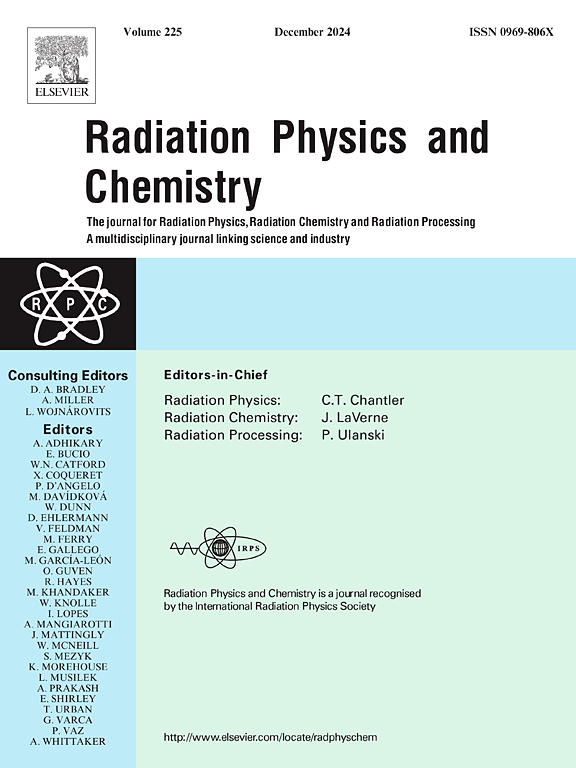掺杂 Gd3+ 的 Na2O-CaO-P2O5-B2O3-ZrO2 玻璃陶瓷用于 γ 射线辐射剂量探测
IF 2.8
3区 物理与天体物理
Q3 CHEMISTRY, PHYSICAL
引用次数: 0
摘要
本研究采用熔淬技术制备了掺杂 Gd3+ 的 NCPBZ 玻璃陶瓷,并对其辐射剂量性能进行了研究。通过改变 Gd3+ 离子的浓度,我们发现浓度为 0.5 mol% 的样品表现出最强的发光和最佳的光激发发光(OSL)强度。因此,我们在不同剂量下对该浓度的样品进行了进一步的 OSL 相关测试。结果表明,该样品在 0.1-1000 Gy 范围内的连续波 OSL 剂量响应拟合值为 m = 0.928,接近于 1,而在 50-1000 Gy 范围内的 R2 为 0.9992,表明其线性度较好。同时,样品十次循环测试的 OSL 强度相对标准偏差为 1.5%。本文研究的掺杂 Gd3+ 的 NaCaPO4 微晶玻璃有望在大范围线性辐射剂量监测中具有广阔的应用前景。本文章由计算机程序翻译,如有差异,请以英文原文为准。
Gd3+ doped Na2O-CaO-P2O5-B2O3-ZrO2 glass ceramics for γ-ray radiation dose detection
In this study, Gd3+-doped NCPBZ glass-ceramics were prepared using melt-quenching technique, and their radiation dose performance was investigated. By varying the concentration of Gd3+ ions, we found that the sample with 0.5 mol% concentration exhibited the strongest luminescence and the best optically stimulated luminescence (OSL) intensity. Therefore, further OSL related tests were conducted on samples with this concentration under different doses. The results showed that the continuous wave OSL dose response fitting value of the sample in the range of 0.1–1000 Gy was m = 0.928, which is close to 1, while R2 was 0.9992 in the range of 50–1000 Gy, indicating better linearity. Meanwhile, the relative standard deviation of the OSL intensity for the sample's ten-cycle tests was 1.5%. The Gd3+-doped NaCaPO4 microcrystalline glass studied here is expected to have broad application prospects in wide-range linear radiation dose monitoring.
求助全文
通过发布文献求助,成功后即可免费获取论文全文。
去求助
来源期刊

Radiation Physics and Chemistry
化学-核科学技术
CiteScore
5.60
自引率
17.20%
发文量
574
审稿时长
12 weeks
期刊介绍:
Radiation Physics and Chemistry is a multidisciplinary journal that provides a medium for publication of substantial and original papers, reviews, and short communications which focus on research and developments involving ionizing radiation in radiation physics, radiation chemistry and radiation processing.
The journal aims to publish papers with significance to an international audience, containing substantial novelty and scientific impact. The Editors reserve the rights to reject, with or without external review, papers that do not meet these criteria. This could include papers that are very similar to previous publications, only with changed target substrates, employed materials, analyzed sites and experimental methods, report results without presenting new insights and/or hypothesis testing, or do not focus on the radiation effects.
 求助内容:
求助内容: 应助结果提醒方式:
应助结果提醒方式:


